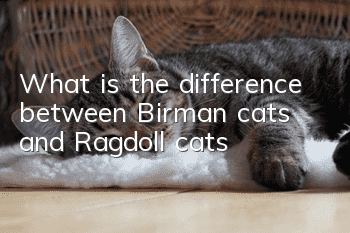Feline Herpes Virus Symptoms and Treatment

Feline herpes virus disease is also called viral rhinobronchitis or "cat nasal bronchitis".
Pathogen
Feline herpes virus will replicate and proliferate in the conjunctiva and upper respiratory tract epithelial cells, as well as in neuronal cells, especially in the trigeminal ganglion, which is the main latent site. Once infected with the herpes virus, the virus remains with you for life. The detoxification of poison-carrying cats is intermittent. Cats with weakened immunity or under stressful conditions such as pregnancy, lactation, transportation, etc. can detoxify through oral and nasal secretions and conjunctival secretions.
The virus enters the cat's body through the mouth, nose, conjunctiva, etc., causing lytic infection of the nasal mucosal epithelial cells, and spreads to the conjunctiva, throat, trachea, bronchi, and bronchi. The lesions are local necrosis and inflammation. It has been reported that sick cats may develop transient viremia, especially newborns or kittens with hypothermia, because feline herpes virus likes to replicate at lower temperatures.
The virus is cold-resistant and not heat-resistant. It is infective at 4℃ and can last for at least 5 months. It can last for a month at 25℃. It loses activity within 3 hours at 37℃ and loses activity within 5 minutes at 56℃. Environmental pollution is not the main source of infection. The main source is sick cats and virus-carrying cats. Cats generally begin to shed the virus 24 hours after being infected with the virus and continue for 1 to 3 weeks. Feline herpes virus infection rarely causes miscarriage compared to other herpes viruses.
Symptoms
Mainly upper respiratory tract diseases and eye diseases occur, often causing erosion and ulcers on the mucosal surface, rhinitis and conjunctivitis. Occasionally, corneal dendritic ulcer lesions with diagnostic specificity may occur.
Main symptoms: fever, depression, sneezing, cough, runny nose, eye discharge, conjunctival congestion.
Bacterial infections often occur, so the secretions will appear pus-like.
Conjunctivitis may be accompanied by corneal ulcers, and chronic corneal bone rot may form. If acute cases cause damage to the turbinates, some cats may also develop chronic rhinitis. Symptoms in kittens are generally more severe than in adult cats, with a mortality rate of 50%.
Feline herpes virus is often infected together with calicivirus, chlamydia, mycoplasma, etc.
Naturally infected feline herpes virus does not induce strong immunity like feline distemper virus. The immunity induced can only fight the disease, but cannot prevent the infection. Therefore, when relapse occurs, there will be clinical symptoms.
Diagnosis
Clinically, PCR detection is mainly used; when there are eye symptoms, sodium fluorescein staining is used to check whether there are corneal ulcers in the eyes.
Treatment
Secondary infection: use antibiotics for prevention and treatment; antiviral treatment: oral administration of famciclovir and ganciclovir eye drops; symptomatic treatment.
Many sick cats do not eat because oral ulcers and nasal secretions affect their sense of smell, so they need to give them food with good palatability, or heat the food to improve the palatability of the food.
Immunity
Although vaccination cannot prevent infection, it can fight the disease. It can reduce the symptoms of infection.
- How long does it take for a newly arrived cat to adapt?
- Why is dry cat food not suitable as a cat’s staple food?
- Can cats eat Xuelihong?
- How long does a cat live? How many years do cats generally live?
- What does a cat imply when it frequently steps on its milk?
- How to prevent and treat fleas in cats
- What should you pay attention to when raising cats and dogs together?
- Is it easy to raise a gradually folded cat?
- Does a tortoiseshell cat recognize its owner?
- Can cats take ibuprofen if they have a cold?



